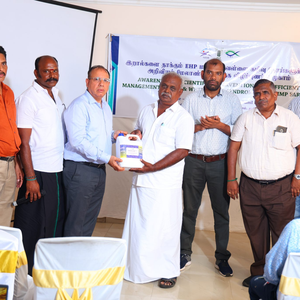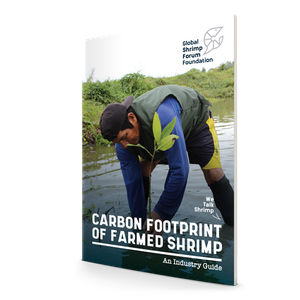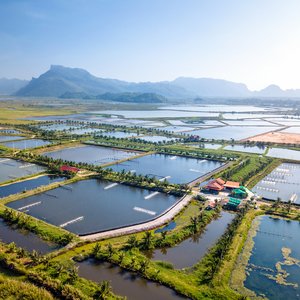Researchers from Aarhus University, the University of Copenhagen and a range of companies will work to develop a closed, sustainable cycle on land that utilizes residual nutrients and CO2 from shrimp and fish RAS farming to grow high-value seaweed for the food and healthcare industries. The project is called SeaFree.
“The project aims to use seaweed production to absorb and convert emissions from land-based aquaculture into a high-value product. Among other things, the seaweed will be used for dietary supplements that can prevent diabetes and sustainable foodstuffs innovations. In addition to capturing emissions that would have otherwise been emitted into the atmosphere and aquatic environment, the seaweed produced is both healthy and rich in umami flavor,” said Professor Marianne Thomsen from the University of Copenhagen.
A single 40-foot container makes seaweed in a week
The project’s starting point is a 40ft container equipped with eight one-thousand-liter tanks. The container solution is a so-called Plug’n’Play technology with great export potential. By combining salt water, CO2 and nutrients with LED lights, the unit can produce a full batch of seaweed in just one week, resulting in an extremely short harvest period.
“SeaFree represents the latest in recycling technology for land-based shrimp and fish farming. Besides capturing emissions, the system also recirculates surplus heat from the plants to the Plug'n'Play technology. The project includes the development of a new technology that makes it possible to use surplus heat to dry the seaweed which is then sold to the healthcare industry. In this way, SeaFree contributes to a more sustainable and efficient production process,” said Thomsen.
According to Thomsen, there is huge potential in farming fish and seaweed in the manner envisioned by SeaFree. If all of the world's land-based shrimp and fish farms implemented the method, it could significantly reduce the CO2 footprint of global food systems. As such, the combination of aquaculture and seaweed cultivation in closed systems may well develop into a new Danish export market.
“On a global level, it will be possible to implement the technology, marketed as ‘SeaFree Synergy Solutions’, anywhere in the world. As for the technology’s environmental benefits, they are unequivocal. We are already in contact with South Korea, which is very interested in the technology and the project’s development,” Thomsen concluded.
The project, funded by Innovation Fund Denmark with DKK 14.4 million (EUR 1.9 million), is a collaboration of Pure Algae, DryingMate, Food Diagnostics, Sigrid Therapeutics, XOventure GmbH/Rigi Care, KOST, SOF Odden Caviar and HanseGarnelen.













